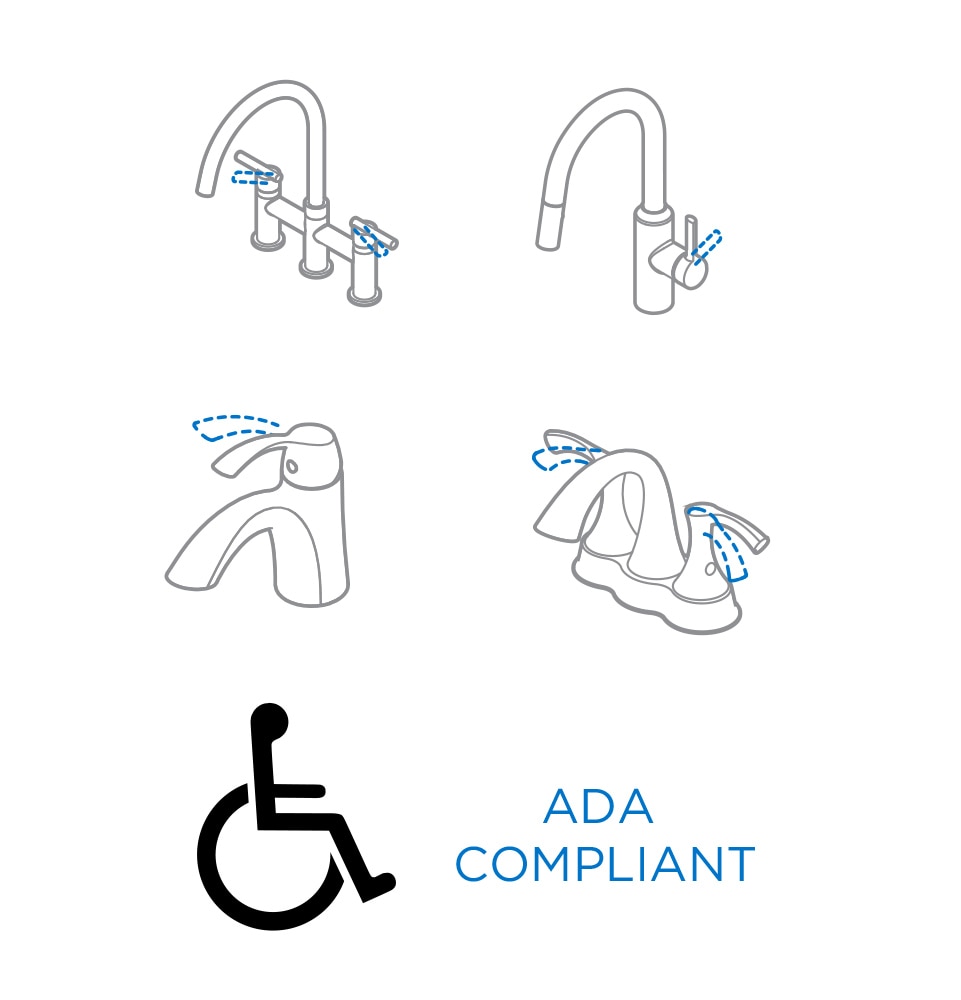Bathroom Faucet Guide

Your bathroom faucet isn’t just a piece of hardware—it’s an important part of the overall design and experience of your bathroom. Whether you’re looking for efficiency, matching finishes, or even something non-traditional, you have plenty of options. Read on to explore them in detail.
Save Water with Watersense
Nearly all Gerber® residential bathroom faucets are WaterSense® certified, meaning their flow rate is under 1.5 gpm (gallons per minute). In fact, Gerber, exceeds the standard with some faucets at 1.2 gpm or lower. This gives you peace of mind, so you can work on saving the environment without sacrificing performance.

Bathroom Faucet Finishes to Consider
Gerber offers bathroom faucets in Chrome, Brushed Nickel, Satin Black, and Brushed Bronze finishes to fit any style. For a unified look, match your cabinet hardware and other fixtures with your faucet finish. Or to make your faucet the star of the show, choose a different finish than other elements in the room for a stand-out statement piece.

Are 3 Hole Faucets Standard?
If you don’t want to drill or cover holes in your countertop, it’s paramount to pay attention to the installation compatibility of your sink and faucet and, if desired or necessary, to ensure that you are using the correct cover plates. There are two main types of 3-hole installations. Those that are fixed with 4" between handle centers, known as centerset faucets, or those with 6-12”, known as widespread faucets. And, of course, there are single hande faucets that only require one hole in your countertop or sink.
Laminar Flow vs. Traditional Aerators
What is laminar flow in a faucet? Rather than introducing air into the stream the way that traditional aerators do in many residential faucet applications, Gerber’s laminar flow aerators deliver a splash-free column of water that appears clear and glass-like. These laminar pressure-compensating aerators are featured on most Gerber bathroom faucets and are a great option for bathrooms in any home.

Single Handle vs 2 Handle Faucets
Single handle faucets are a more convenient and user-friendly option and typically only require one hole in the countertop. However, they don’t allow as precise temperature adjustments as two handle faucets. The traditional setup of a two handle faucet has separate hot and cold handles, allowing for better water temperature and flow control. This makes it nearly impossible to accidentally turn on the hot water. A disadvantage of a two handle faucet is that they require both hands to adjust the temperature at the same time. Additionally, two handle faucets usually require three holes.

What Makes a Bathroom Faucet ADA Compliant?
To be labeled as ADA compliant, faucets must be operable with one hand without tight grasping or twisting, and able to be activated using a maximum of five pounds of force. Intended for easy operation for people of all abilities, nearly all Gerber faucets are ADA compliant based on faucet operation.

Types of Faucets to Fit Every Style

Style is completely up to the owner, but it helps to have a basic idea of what you are looking for in order to optimize the design of your space. Gerber offers various types of faucets to fit many different styles and bathroom spaces, but we categorize them into three general style types: traditional, transitional, and contemporary (or modern). Traditional faucets feature classic design with curved surfaces and charming details. Contemporary or modern faucets are sleek and simple, with more defined lines. Transitional faucets blend the best of both worlds by combining classic and contemporary elements for a look that can complement a variety of styles.